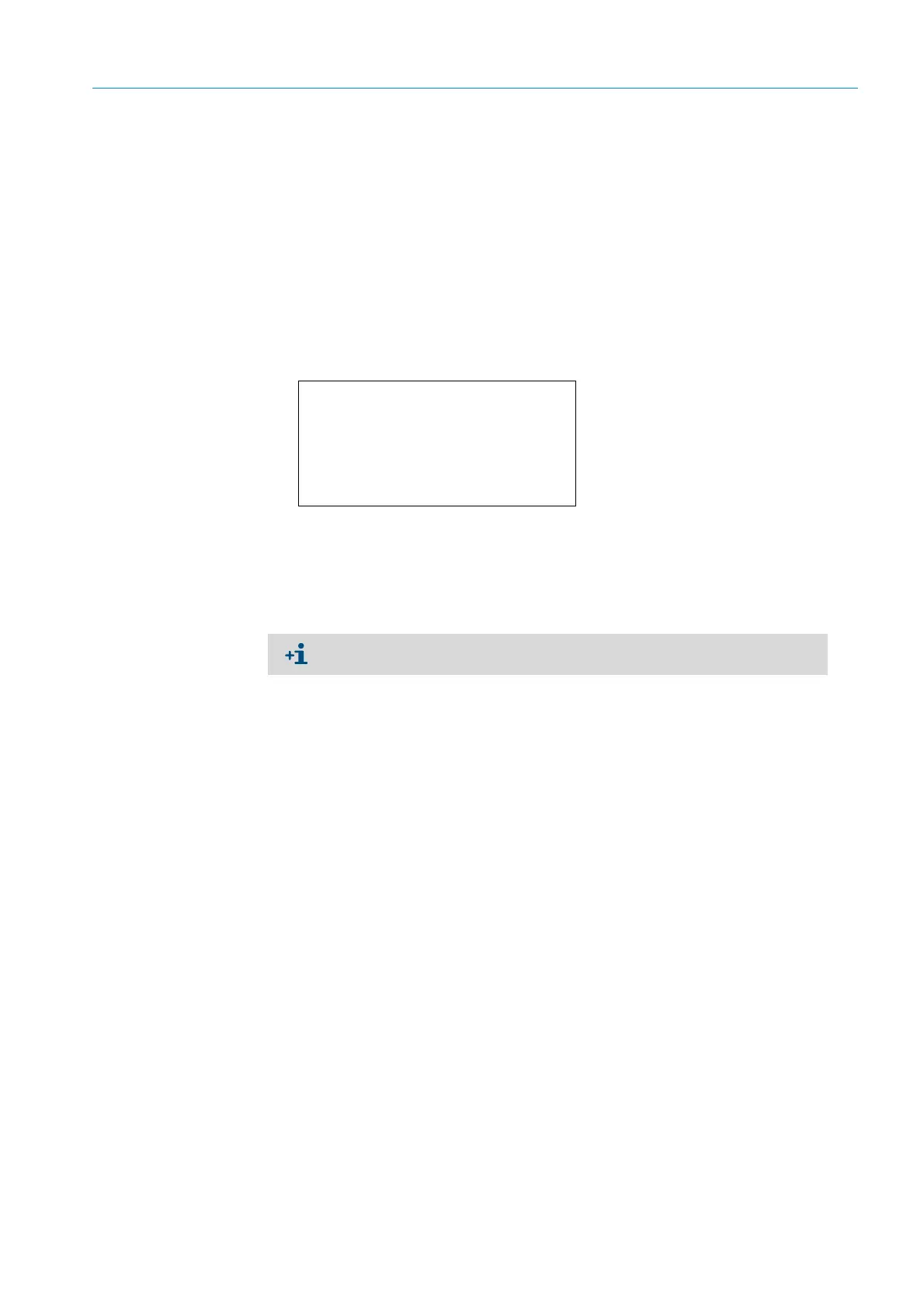81
8012428/YWL2/3-0/2016-08| SICK O P E R A T I N G I N S T R U C T I O N S | DUSTHUNTER T
Subject to change without notice
START-UP AND PARAMETER SETTINGS 4
– Use the regression function of the measuring system (use without measured value
computer). In this case, the correlation to the extinction has to be determined. To do
this, calculate the regression coefficients cc2, cc1 and cc0 to be entered in the
measuring system from K2, K1, K0.
Using (2) in (1), the result is as follows:
Using (3), the result is as follows:
Now enter the regression coefficients cc2, cc1 and cc0 determined in directory “Configu-
ration/Application parameters” (see “SOPAS ET menu: DH T200/Configuration/Application
parameter (example)”, page 69) (set sender/receiver unit to “Maintenance” state and
enter the Level 1 password).
Reset the sender/receiver unit back to “Measurement” state afterwards).
ccc2Ext
2
⋅ cc1 Ext⋅ cc0++=
(3)
cK2LZExt
20mA LZ–
MBE
-----------------------------
⋅+
2
K1 LZ Ext
20mA LZ–
MBE
-----------------------------
⋅+
K0+⋅+⋅=
cc1 2 K2 LZ K1+⋅⋅()
20mA LZ–
MBE
-----------------------------
⋅=
cc0 K2 LZ
2
⋅ K1 LZ⋅ K0++=
cc2 K2
20mA LZ–
MBE
-----------------------------
⋅
2
=
This method allows changing the parameters for the selected measuring range as
desired.

